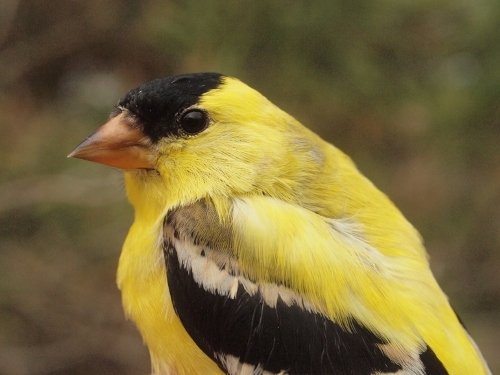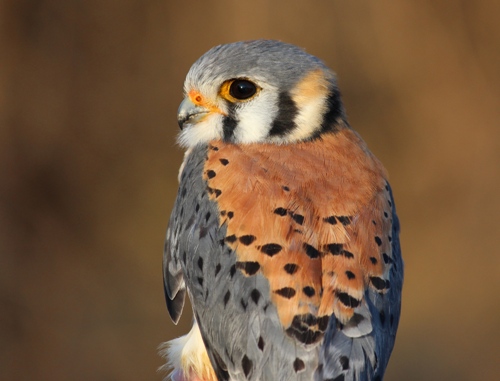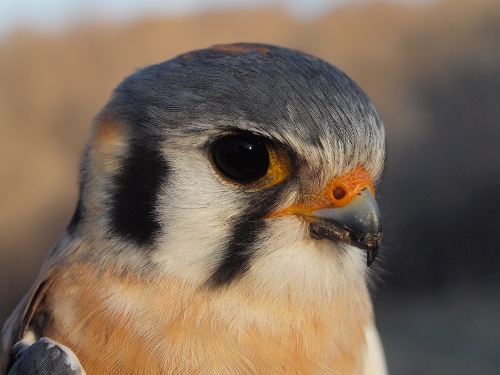|
|
THIS WEEK |
THIS SPRING |
2014 TOTAL |
SITE TOTAL |
|
# birds (and species) banded |
197 (17) |
366 (25) |
366 (25) |
46676 (114) |
# birds (and species) repeat |
28 (9) |
50 (11) |
50 (11) |
9184 (70) |
|
# birds (and species) return |
12 (4) |
43 (9) |
43 (9) |
1477 (38) |
|
# species observed |
57 |
74 |
76 |
209 |
|
# net hours |
358.8 |
861.3 |
861.3 |
80044.6 |
|
# birds banded / 100 net hours |
54.9 |
42.5 |
42.5 |
58.3 |
|
|
Note: table does not include nocturnal banding (owls) |
Banders-in-charge: Simon Duval, Gay Gruner
Assistants: Sue Bishop, Marie-France Boudreault, Claude Cloutier, Luke Currin, David Davey, Jean Demers, Barbara Frei, Marcel Gahbauer, Alison Hackney, Lisa Keelty, Helen Kohler, Marcel Lebeau, Barbara MacDuff, Don MacDuff, Francine Marcoux, Betsy McFarlane, Ana Morales, Benoît Piquette, Catherine Russell, Ahmad Shah, Jillian Slater, Clémence Soulard, Patricia Stotland, Christiane Tremblay
Notes: Week 5 of spring has been the most consistently quiet of our 20 weeks of banding annually, as in nine previous years we never broke the 100 bird barrier … well, that certainly changed this week, when we shattered that mark on the first day of the week, and ended up with an impressive total of 197! To be fair, most of the week was typically quiet, with between 6 and 16 birds banded daily – the record was overwhelmingly driven by the first day of the week when we banded 145 birds, by far the most ever for a spring day. Given that the number of species observed for the week usually reflects notable contributions over several days, it’s not surprising that with only one busy day, the count of 57 was well below the normal average for this time of year.

American Goldfinches are almost fully back to their yellow summer splendour.
(Photo by Simon Duval)
|
In addition to the American Kestrel, which became the 114th species banded at MBO, we banded four other species this week that were new for the season: Downy and Hairy Woodpeckers, Blue Jay, and Hermit Thrush. Only Osprey and White-crowned Sparrow were newly observed for the season.
This week’s
top 10 [last week's top 10 in brackets]
#
individuals banded |
mean # individuals observed daily |
1. Cedar Waxwing (147) [1] |
1. Cedar Waxwing (154) [2] |
2. American Robin (8) [4] |
2. Canada Goose (101) [1] |
3. Song Sparrow (6) [6] |
3. Red-winged Blackbird (51) [3] |
3. White-throated Sparrow (6) [7] |
4. American Robin (24) [4] |
3. Fox Sparrow (6) [2] |
5. Ring-billed Gull (22) [5] |
6. Ruby-crowned Kinglet (5) [2] |
6. Greater Snow Goose (21) [6] |
7. Red-winged Blackbird (4) [10] |
7. Song Sparrow (15) [7] |
| 8. Brown Creeper (3) [-] |
8. American Crow (14) [-] |
| 9. American Tree Sparrow (2) [8] |
9. Black-capped Chickadee (13) [8] |
9. Swamp Sparrow (2) [-]
9. American Goldfinch (2) [-] |
10. White-throated Sparrow (12) [-]
|
|
While
a single species occasionally dominates the banding totals by a wide margin in winter when large flocks of finches move through, we have never seen such a lopsided list for a week of migration monitoring. The massive influx of birds banded on April 25 was almost entirely Cedar Waxwings … they accounted for 134 (92%) of the 145 individuals banded that day! Just as impressively, over 70 of them were in nets B3 and N3 on the same mid-morning net round, and most of the rest were in the B/N nets on the following check. Also of note, most of the waxwings were second-year birds, perhaps a reflection of good productivity in summer/fall 2013 related to the excellent mountain-ash crops last year. American Robin took a very distant second place for the week, although combined with last week’s 21, the season total is already higher than for any previous full spring except 2011 (and that record of 30 is almost certain to fall soon at this rate). Rounding out the top five was a three-way tie among the dominant April sparrow species – Song, White-throated, and Fox. A couple of other sparrows (American Tree and Swamp) made it into the lower half of the top ten, along with the trailing end of the Ruby-crowned Kinglet migration, continuing surprisingly small numbers of Red-winged Blackbirds, plus Brown Creeper and American Goldfinch.
Although
the number of Cedar Waxwings banded dropped off significantly after the first day of the week, the count of individuals in the area remained elevated for the next five days (ranging from 110 to 200 daily, compared to a record count of 400 on April 25). Of note too, not a single waxwing banded on April 25 was recaptured as the week went on – either they learned exceptionally well to avoid the nets after their first experience, or we had at least a couple of waves of waxwings moving through, but with the subsequent ones staying farther from the nets. Canada Goose and Red-winged Blackbird are typically the top two species at this time of year, and they were pushed down to second and third place by the waxwing influx. American Robin and Ring-billed Gull vary in abundance at this point in spring from year to year, and both were more numerous than usual this week. Similarly, the count of Greater Snow Geese was unusually high, as they have only previously appeared in the top ten for week 5 twice previously, in 2009 and 2012. Rounding out this week’s list were three of the local regulars (Song Sparrow, American Crow, and Black-capped Chickadee), as well as an increasing number of migrant White-throated Sparrows.
|

Another view of this week’s star, the male American Kestrel.
(Photo by Simon Duval)
|



